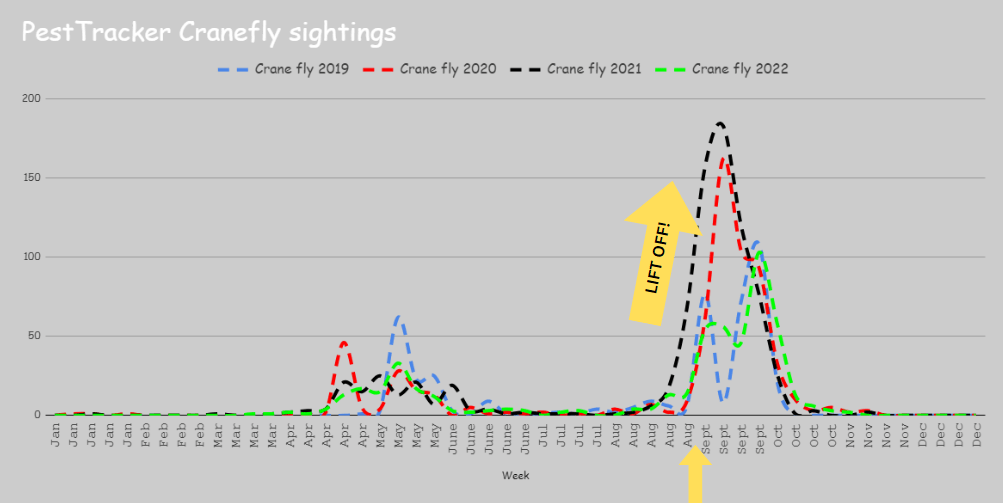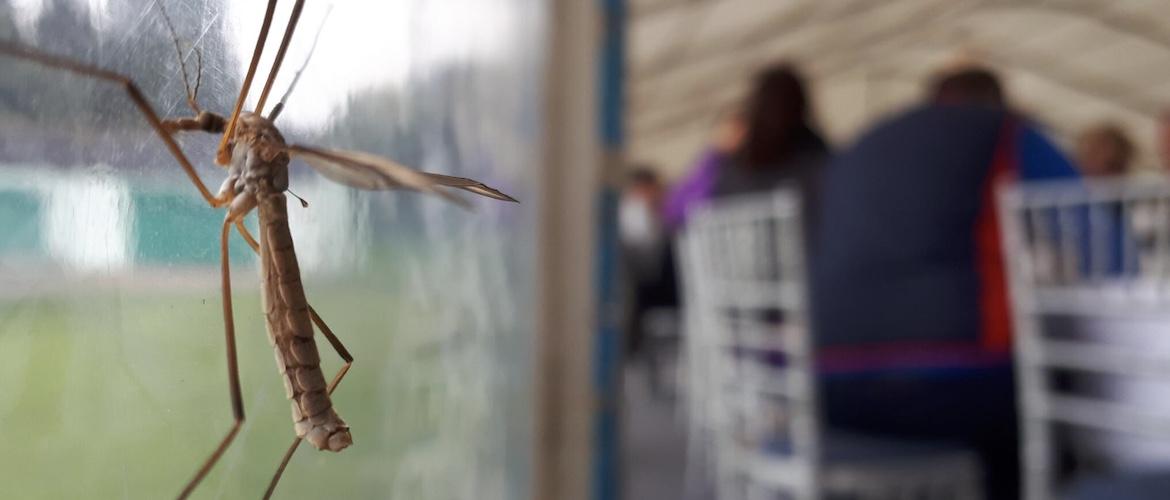As we now have Acelepryn fully approved in the UK & Ireland for control of Leatherjackets in managed amenity turf it is important we keep watch of the adult Cranefly hatch for application timings.
Last year was very hot and dry and generally the number of Cranefly sightings was lower, so its going to be interesting to see what a mild wet summer will deliver us in terms of cranefly numbers.
The only way we’ll get a good view on this is if we get everyone logging sightings on PestTracker, and you can keep informed on twitter by following #PestTracker.
I was on a walking holiday in Cornwall this weekend and the grass in the cattle fields was positively buzzing with adult Cranefly and on a recent visit to a golf course there were lots of pupae cases from where Leatherjackets have emerged as cranefly and left them sticking put in the sward. Much easier to spot on short heights of cut. Take a look at the video below.
As you can see in the graph below the adult emergence or ‘hatch’ for UK & Ireland starts in dribs and drabs in early August, but we really see it shoot up towards the end of the month and into September so let us know if you are seeing them!

Acelepryn timings are best targeted towards the end of the peak flight. Mid to late October applications have offered the best levels of control in the trials we’ve conducted over the years.
PestTracker helps the industry keep an eye on the flight timings but also the level of Cranefly activity we are seeing so thank you to all those who are logging.
We’re working on a slicker way to log sightings for the future, to make it simpler. But for now please do log them on the PestTracker page.
For more information on options to manage Cranefly in turf you can read the previous blog ‘Controlling Cranefly‘.




